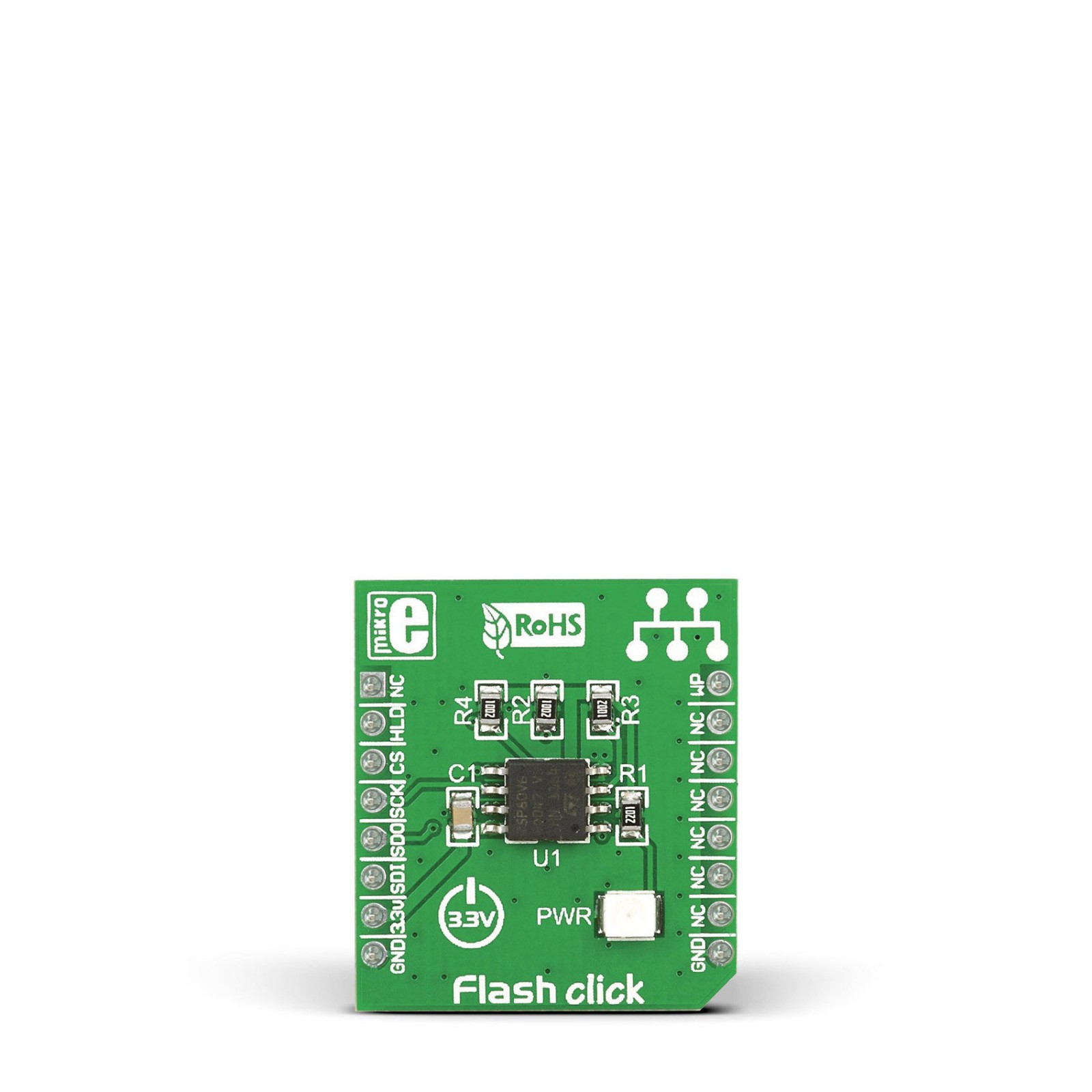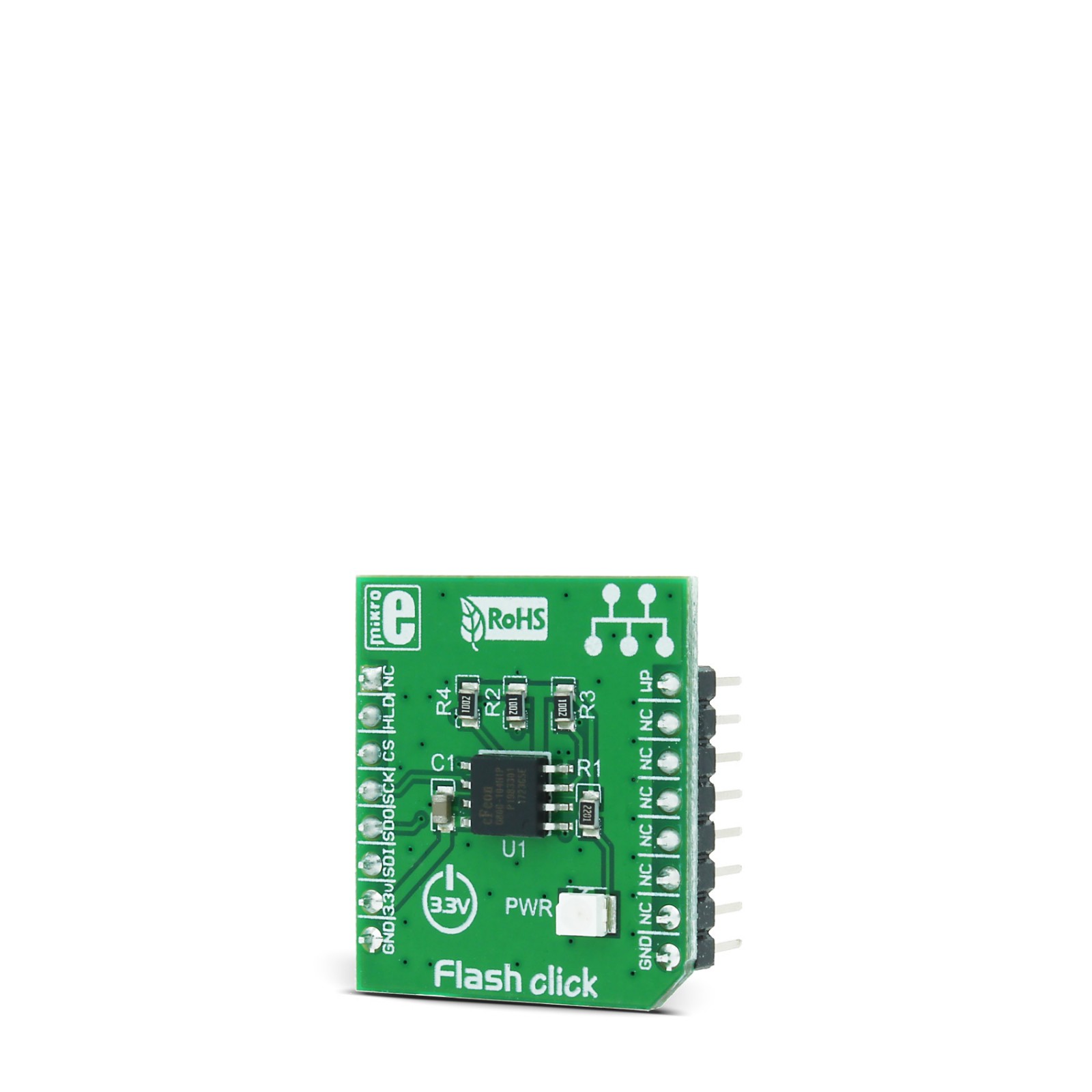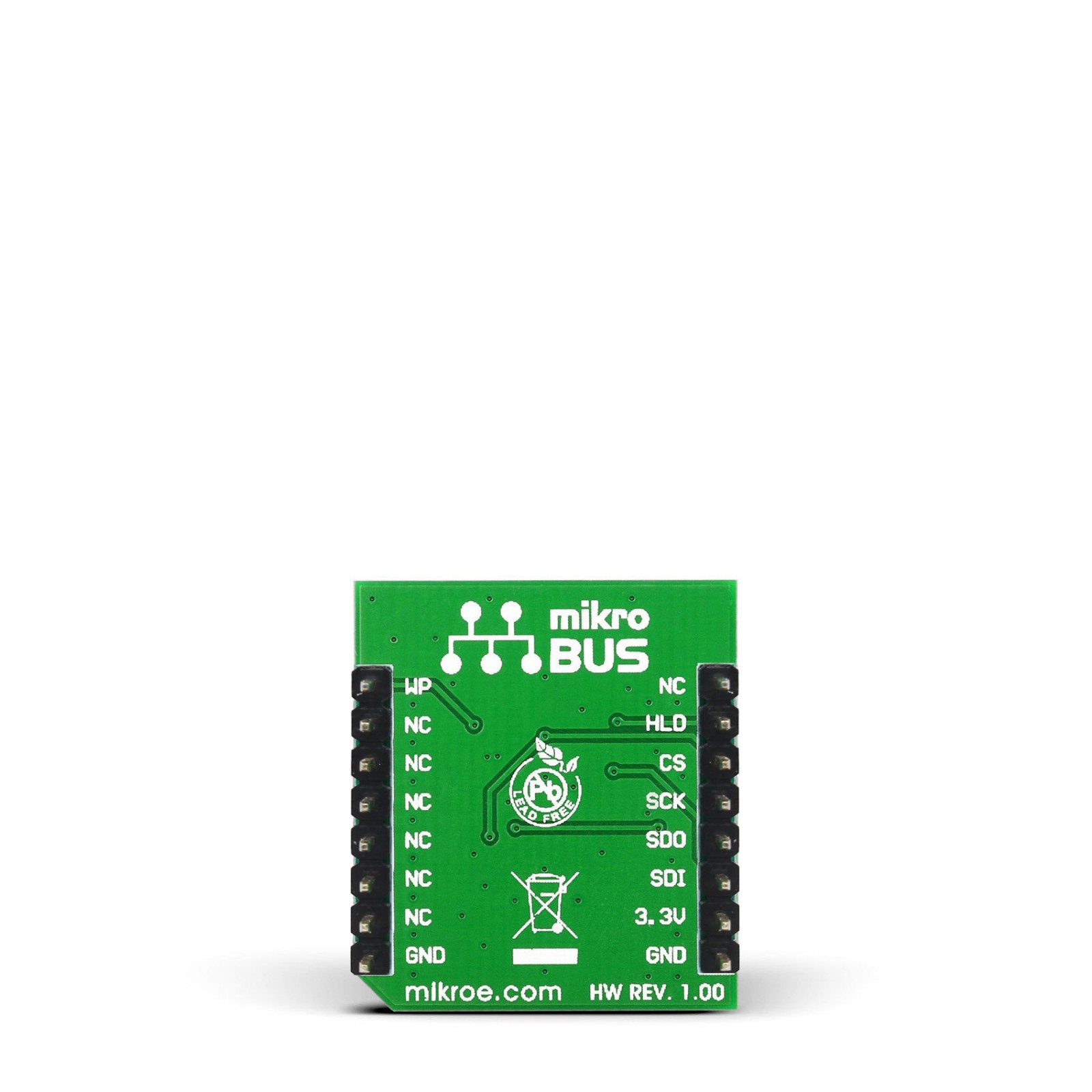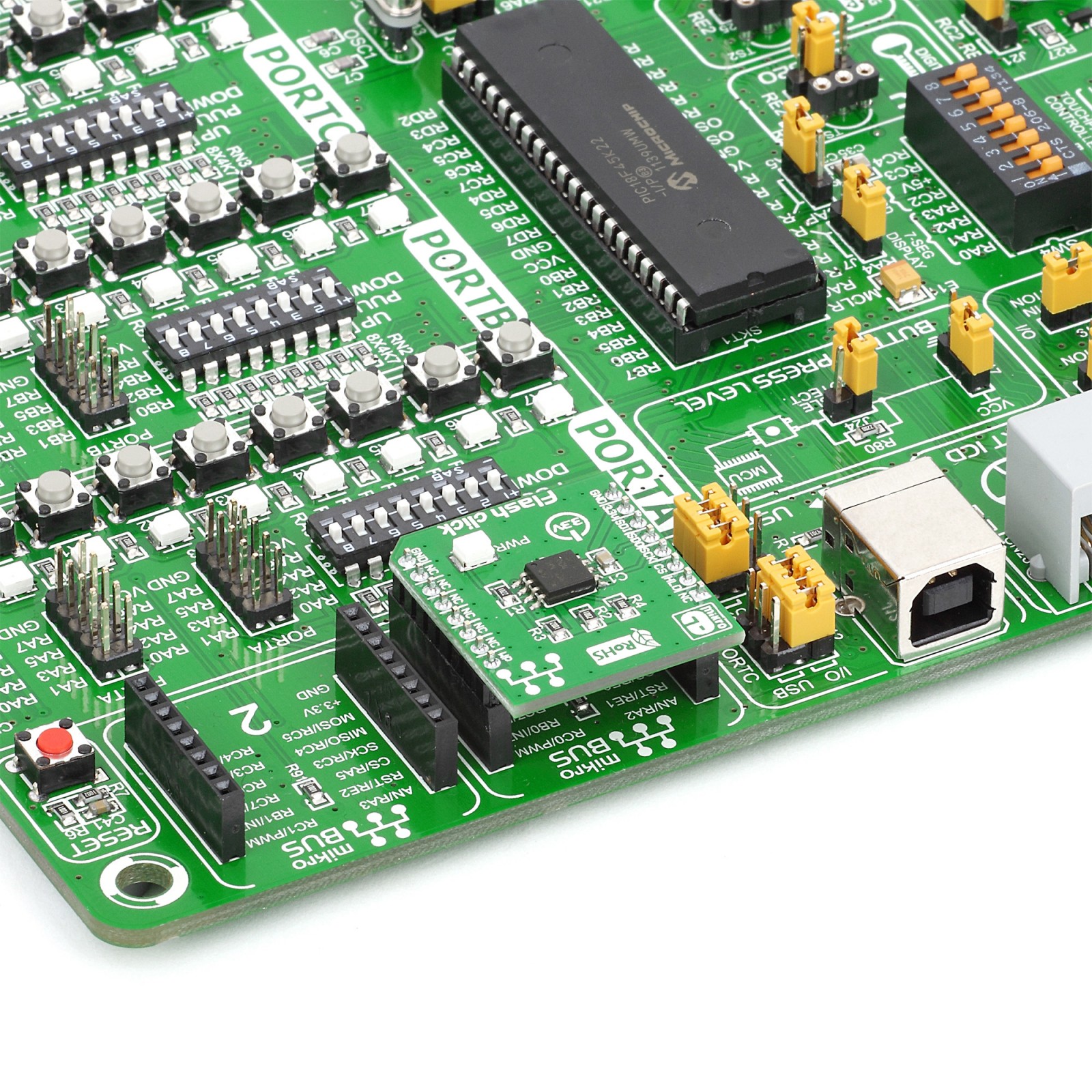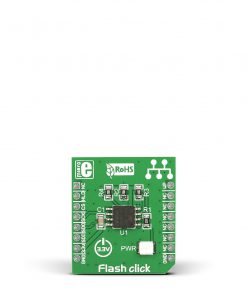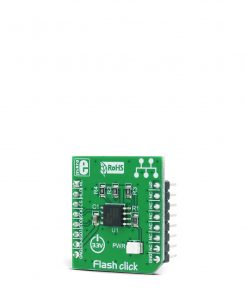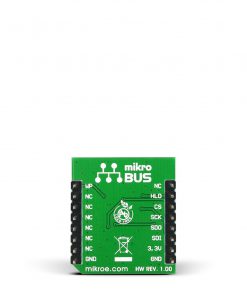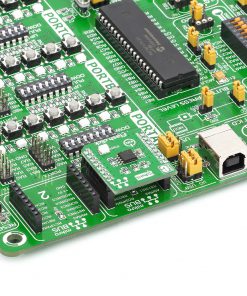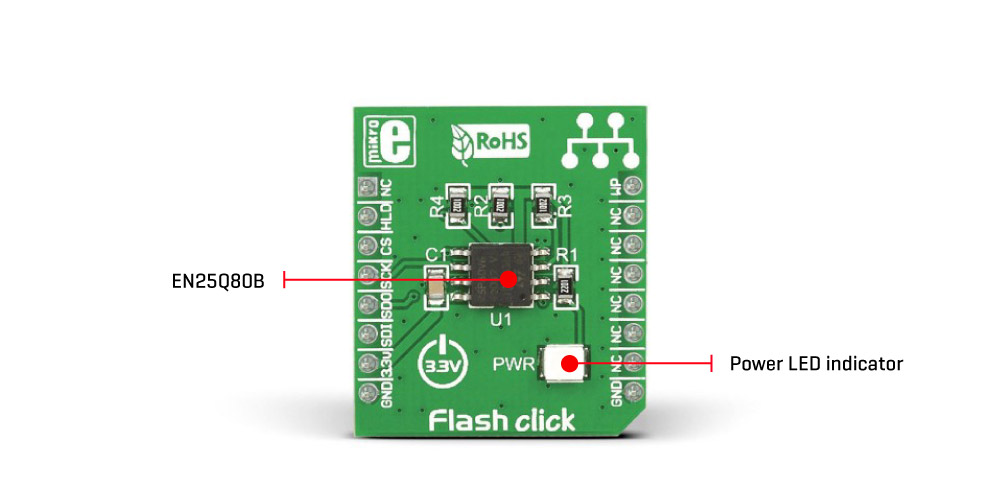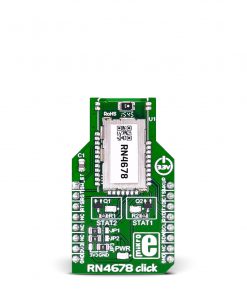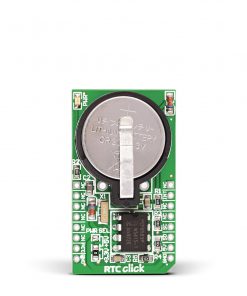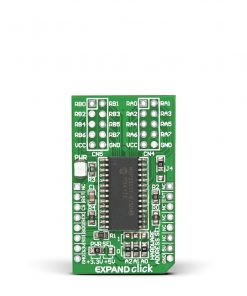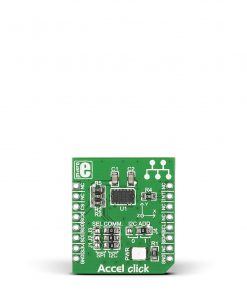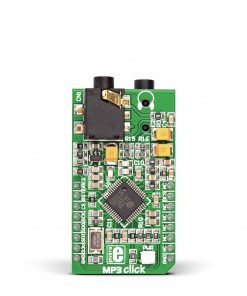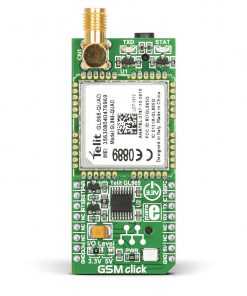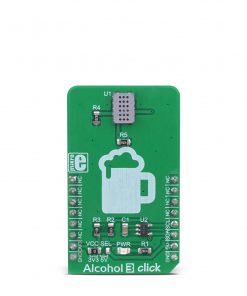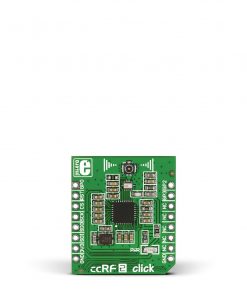Subtotal: R115.00
Flash Click
R225.00 ex. VAT
Flash Click is a compact add-on board representing a highly reliable memory solution. This board features the EN25Q80B, a serial flash memory from EON Electric. The capacity of this flash memory is 8 Megabit (1MB) with 256 uniform sectors, 4KB each, and features advanced write protection mechanisms. The used flash IC has excellent endurance and can withstand up to 100,000 write cycles, with a data retention period of about 20 years. This Click board™ makes the perfect solution for developing storage and data transfer solutions for consumer devices and industrial applications.
Flash Click is supported by a mikroSDK compliant library, which includes functions that simplify software development. This Click board™ comes as a fully tested product, ready to be used on a system equipped with the mikroBUS™ socket.
Stock: Lead-time applicable.
| 5+ | R213.75 |
| 10+ | R202.50 |
| 15+ | R191.25 |
| 20+ | R184.05 |

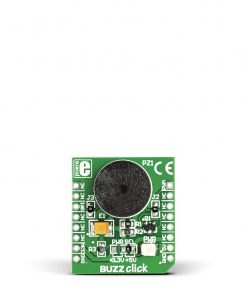 BUZZ Click
BUZZ Click 